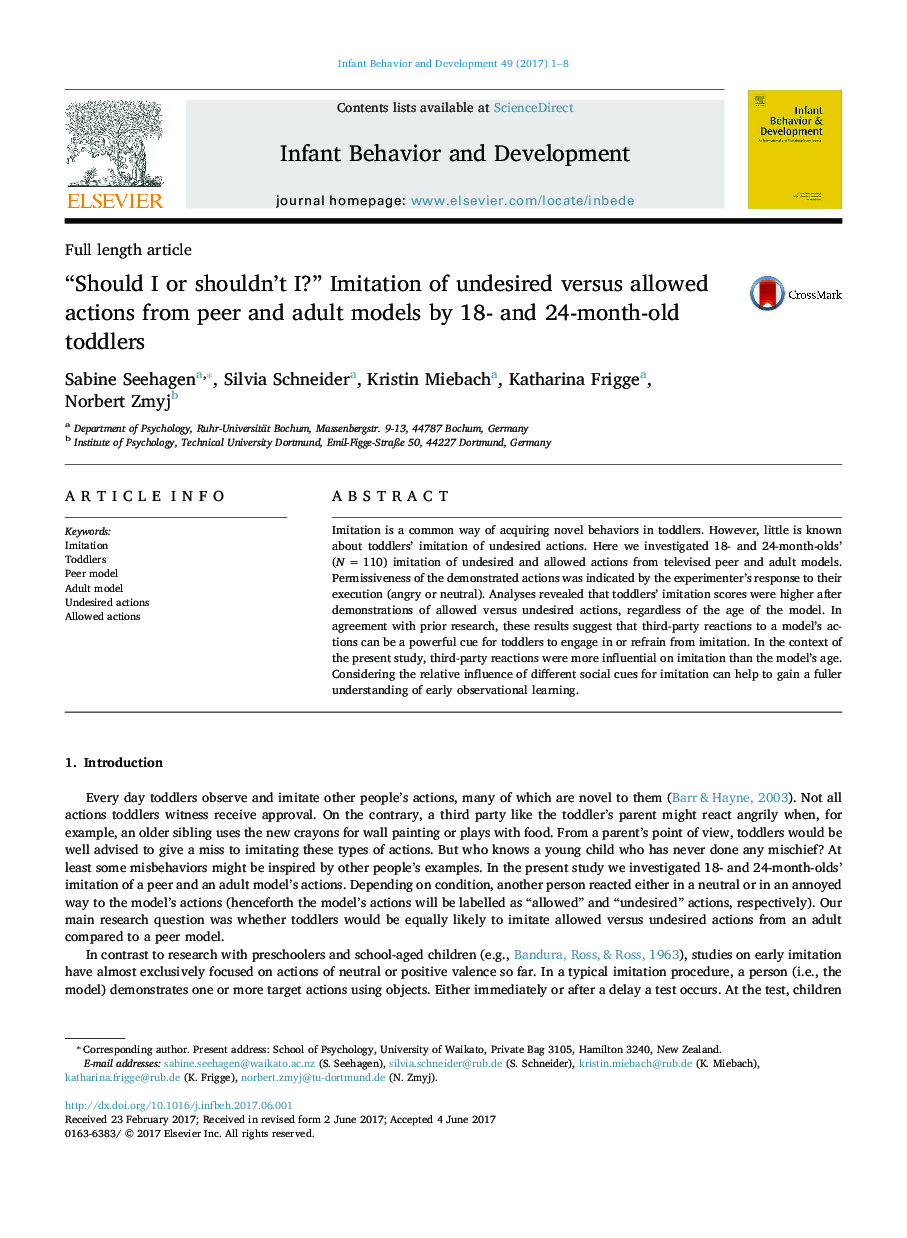| Article ID | Journal | Published Year | Pages | File Type |
|---|---|---|---|---|
| 5039747 | Infant Behavior and Development | 2017 | 8 Pages |
â¢Toddlers might be prone to imitate different types of actions from peers vs. adults.â¢Imitation scores were higher after demonstrations of allowed vs. undesired actions.â¢There were no significant differences in imitation from a peer vs. adult model.
Imitation is a common way of acquiring novel behaviors in toddlers. However, little is known about toddlers' imitation of undesired actions. Here we investigated 18- and 24-month-olds' (NÂ =Â 110) imitation of undesired and allowed actions from televised peer and adult models. Permissiveness of the demonstrated actions was indicated by the experimenter's response to their execution (angry or neutral). Analyses revealed that toddlers' imitation scores were higher after demonstrations of allowed versus undesired actions, regardless of the age of the model. In agreement with prior research, these results suggest that third-party reactions to a model's actions can be a powerful cue for toddlers to engage in or refrain from imitation. In the context of the present study, third-party reactions were more influential on imitation than the model's age. Considering the relative influence of different social cues for imitation can help to gain a fuller understanding of early observational learning.
